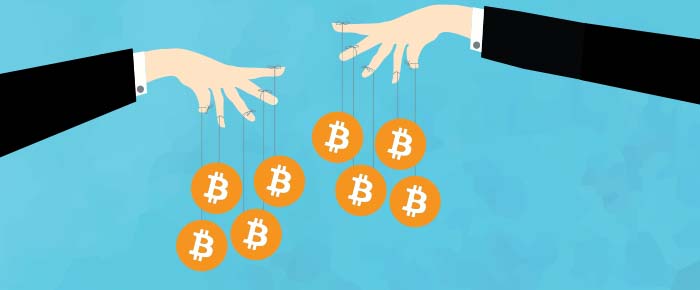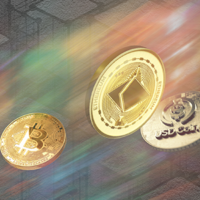
Throughout the years, cryptocurrency has become a very controversial topic of discussion, mainly through the two opposing forces that try to navigate within the space. On the one hand, there are believers of the technology, the futurists and the innovators who buy bitcoin1 and store it safely.
On the other hand, there are those who prey on the less educated, trying to take advantage of their lack of knowledge, and scam them into giving up their crypto. This happens in a multitude of ways and recognizing it can be tricky.
As the crypto space evolves, so do the methods of these so-called scams. The exit scam is one of the hardest to spot. So, what does the term mean and how can one avoid falling victim to it? This article defines the exit scams and gives suggestions on how to protect oneself from this type of scam.
What Are Cryptocurrency Exit Scams?
An exit scam refers to a cryptocurrency profiting from early investors by literally “pulling out” all their funds from the market. In other words, the people with the largest wallets of a specific new cryptocurrency try to artificially inflate (pump) the price through marketing and promotional activities, only to later get rid of their personal bags (dump) onto new investors.
Where Do We Find Such Scams?
Cryptocurrency exit scams became very popular during 2017, with the boom of initial coin offerings (ICOs). New and promising projects used their influence and community to promote upcoming coins, promising incredible returns only to later skip on the delivery process and run away with user funds.
In recent times, there are once again “exit scams” in many different forms linked with all the new developments in the crypto space:
- Decentralized finance-related projects listed on decentralized exchanges are very risky, as the space is full of “rug pulls” (another form of exit scam). It has happened several times, even with coins listed on popular centralized exchanges. One example is the recent project TITAN from Iron Finance, which attained large popularity mainly due to an investment by Mark Cuban.2 After the “rug pull,” Cuban asked for improved regulation in this space,3 something inherently impossible due to the nature of decentralization.
- Nonfungible tokens (NFTs) are now literally being created by anyone with a decent following. Celebrities, YouTubers, athletes, you name it. If you check the oversaturated space right now, it may seem that NFT stands for No Freaking Talent. And yet, the art often sells for dozens of Ethers, only to be left illiquid without anyone interested in the secondary markets. One example of this is the recent sale of Logan Paul’s NFTs, which would award three buyers with a first edition pack of Pokémon cards valued at $40,000 along with other prizes. The NFTs initially received inflated valuations of $20,000-plus dollars but now some are left unsold at price points lower than $1,000 on OpenSea.4
- Finally, another fun concept that surfaced recently was the sale of tweets. In other words, people can buy the ownership of a celebrity’s tweet by turning it into an NFT. A few days after the release, one user paid $639 to acquire a tweet that was deleted5 shortly after. Talk about a genuine exit scam.
How to Protect Yourself From Exit Scams
Most investors that enter the space at this relatively mature stage will wonder how they can best spot which projects are legitimate and which are not. The following are a few tips to keep in mind when it comes to exit scams, all of which have to do with investment strategies:
- Before becoming impulsive and buying tokens that a favorite YouTuber is promoting (usually at an already inflated price), make sure to check the project’s fundamentals. Very often, the project is simply a cheaper “copy” of an already existing solution without strong foundations for its future growth.
- Do research when it comes to projects that are offering above-average returns. While some may be legitimate, others may be very risky. More specifically, make sure to learn all about staking, yield farming and high-yield savings accounts for crypto. Also, make sure to use price tracking platforms like CoinGecko regularly to get the latest information and research materials when it comes to the tokens of interest.
- If there is a project of interest along with a strong impulse to buy it, wait. Give it at least a week and observe the direction of the price. Very often, the source of influence promotes the coin at a local top, which enables interested parties to let it cool off before entering at a better position.
Above all, it is important to understand that the value of cryptocurrencies increases when one is patient. While a favorite Twitter account may be longing small-cap coins with 100 times the leverage, the chances of actually making a profit in the industry increase multifold when taking a long-term approach.
Therefore, it is also important to realize that going with the winner offers a near-certain success, despite the midterm fluctuations often seen in cryptocurrency prices.6 Invest in the likes of Bitcoin, Ethereum and native tokens of popular exchanges like UNI, BNB or FTT. While the price may fluctuate over the short to midterm, there is now enough evidence to reliably assume a long-term uptrend. Even if this is not the case, however, the increased liquidity of such projects enables investors to enter and exit their positions quickly. This is not possible in the NFT world, where users are often stuck with an expensive piece of art during a declining market, only to find themselves with regrets of an overpriced mistake.
Conviction, liquidity and real-world cases are still the most important factors when it comes to investing in digital assets. To avoid being scammed, it is important to live by the principle of “if it is too good to be true, it is probably a scam.”
- “Buy Bitcoin with Credit Card or Debit Card,” paybis, https://paybis.com/
- Jeff Benson, “Mark Cuban ‘Hit’ by Apparent DeFi Rug Pull,” Decrypt, https://decrypt.co/73810/mark-cuban-hit-apparent-defi-rug-pull
- Billy Bambrough, “Billionaire Bitcoin Investor Mark Cuban Calls For Crypto Regulation After Price Of Radical New Token Suddenly Crashes To Zero,” June 18, 2021, https://www.forbes.com/sites/billybambrough/2021/06/18/billionaire-bitcoin-investor-mark-cuban-calls-for-crypto-regulation-after-price-of-radical-new-token-suddenly-crashes-to-zero/?sh=1361db762607
- Geoff Weiss, “Logan Paul Sells $5 Million Worth Of NFTs Ahead Of His Pokémon Box Break,” Tubefilter, February 22, 2021, https://www.tubefilter.com/2021/02/22/logan-paul-sells-5-million-nfts-pokemon-box-break/
- Jamie Redman, “NFT Immutability Debate Grows as Tokenized Tweets Get Deleted and NFT Images Are Replaced,” Bitcoin.com, March 11, 2021, https://news.bitcoin.com/nft-immutability-debate-grows-as-tokenized-tweets-get-deleted-and-nft-images-are-replaced/
- “Prices,” paybis, https://paybis.com/price/










